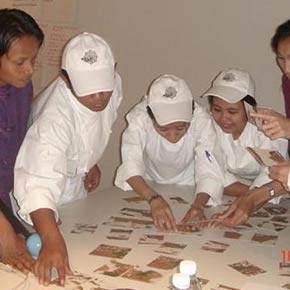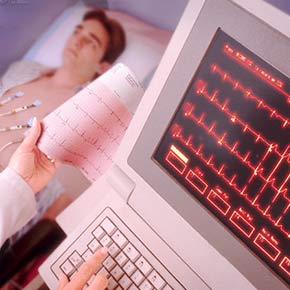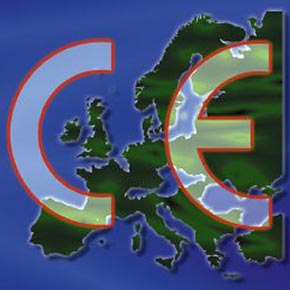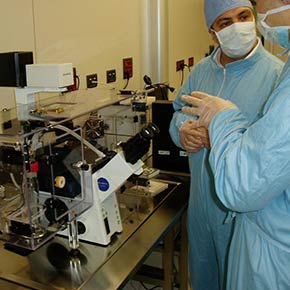
ISO 9001 is the internationally recognized standard for the Quality Management System. The standard is generic in nature and can be implemented in both manufacturing and service industries. It helps all kinds of organizations to succeed through improved customer satisfaction, staff motivation and continual improvement.
ISO 9001 applies to the processes and activities that create and control the products and services an organization supplies. It can help bring out the best in your organization by enabling you to understand your processes for delivering your products/services to your customers
ISO 9001 prescribes systematic control of activities to ensure that the needs and expectations of customers are met. This standard is by far the world's most established quality framework, as it has been implemented in approximately one million organizations around the world.
Organizations that have been certified to this standard reflect evidence of a business operation, which is supported by a fundamental and robust management system platform.

Specifies the requirements for such an environmental management system. Fulfilling these requirements demands objective evidence which can be audited to demonstrate that the environmental management system is operating effectively in conformity to the standard. ISO 14001 is an internationally accepted standard that sets out how you can go about putting in place an effective Environmental Management System (EMS).
This standard was first published in 1996 and specifies the actual requirements for an environmental management system. It applies to those environmental aspects which the organization has control and over which it can be expected to have an influence. ISO 14001 may be implemented in any organization, regardless of size, location or income. The aim of the standard is to reduce the environmental footprint of a business and to decrease the pollution and waste a business produces.

(FSMS) is the internationally recognized standard for the food safety management system of businesses. It applies to the processes that create and control the products and services an organization supplies. It prescribes systematic control of activities to ensure that the needs and expectations of customers are met. It is designed and intended to apply to virtually any product or service, made by any process anywhere in the world. Registration to ISO 22000 by an accredited certification body shows committed to quality, customers, and a willingness to work towards improving efficiency.
It demonstrates the existence of an effective quality management system that satisfies the rigours of an independent, external audit, Mandatory Stage I & Stage II audits are carried out for all our clients, An ISO 22000 certificate enhances company image in the eyes of customers, employees and shareholders alike. It also gives a competitive edge to an organisation's marketing Since ISO 22000 is a generic food safety management standard, it can be used by any organization directly or indirectly involved in the food chain. It applies to all organizations in the food chain. It doesn’t matter how complex the organization is or what size it is, ISO 22000 can help ensure the safety of its food products.

(HACCP) is a systematic preventive approach to food safety and pharmaceutical safety that addresses physical, chemical, and biological hazards as a means of prevention rather than finished product inspection.
HACCP is used in the food industry to identify potential food safety hazards, so that key actions, known as Critical Control Points (CCPs) can be taken to reduce or eliminate the risk of the hazards being realized. The system is used at all stages of food production and preparation processes including packaging, distribution, etc

Health & Safety Management System was created via the concerted effort from a number of the worlds leading national standards bodies, certification bodies, and specialist consultancies. A main driver for this was to try to remove confusion in the workplace from the proliferation of certifiable OH&S. specifications. ISO 45000 is the internationally recognized standard for Occupational Health and Safety Management Systems. This standard was created via a concerted effort from a number of the world's leading national standards bodies, certification bodies, and specialist consultancies.
ISO 45000 can be adopted by any organization wishing to implement an effective system to reduce the risks associated with the health and safety at work environment. The standard helps to maintain a healthy and safe work environment, which makes registration key to improvement in the work place.

(ISMS) is closely associated with ISO 27002, which is a code of practice for Information Security Management. ISO 27002 (formerly ISO 17799) provides a common and proved basis for developing high organizational security standards and effective security management practice. ISO 27001 is the actual standard to which certification is measured. It sets out the requirements for an Information Security Management System (ISMS). An ISMS is a systematic approach to managing the security of sensitive information - encompassing people, processes, IT systems and policy. ISO 27001 is designed to identify, manage and reduce the range of threats to which your information is regularly subjected. The ISO 27001 standard was published in October 2005, essentially replacing the old BS 7799-2 standard. It is the specification for an ISMS, an Information Security Management System. BS 7799 itself was a long standing standard, first published in the nineties as a code of practice. As this matured, a second part emerged to cover management systems. It is this against which certification is granted. Today in excess of a thousand certificates are in place, across the world.
The objective of the standard itself is to "provide a model for establishing, implementing, operating, monitoring, reviewing, maintaining, and improving an Information Security Management System". Regarding its adoption, this should be a strategic decision. Further, "The design and implementation of an organization's ISMS is influenced by their needs and objectives, security requirements, the process employed and the size and structure of the organization".

Specifies requirements for a quality management system where an organization needs to demonstrate its ability to provide medical devices and related services that consistently meet customer requirements and regulatory requirements applicable to medical devices and related services.
The primary objective of ISO 13485:2016 is to facilitate harmonized medical device regulatory requirements for quality management systems. As a result, it includes some particular requirements for medical devices and excludes some of the requirements of ISO 9001 that are not appropriate as regulatory requirements. Because of these exclusions, organizations whose quality management systems conform to this International Standard cannot claim conformity to ISO 9001 unless their quality management systems conform to all the requirements of ISO 9001.
All requirements of ISO 13485:2016 are specific to organizations providing medical devices, regardless of the type or size of the organization.

CE marking (also known as CE mark) is a mandatory conformity mark on many products placed on the single market in the European Economic Area (EEA). Officially, CE has no meaning as an abbreviation, but may have originally stood for European accordance (European Community) or Conformité Européenne ("European Conformity").By affixing the CE marking, the manufacturer or person placing the product on the market or putting it into service asserts that the item meets all the essential requirements of the relevant European Directive(s). Product Directives contains the "essential requirements" and/or "performance levels" and "Harmonized Standards" to which the products must conform. Harmonized Standards are the technical specifications (European Standards or Harmonization Documents)
CE Marking on a product ensures the free movement of the product within the EFTA & European Union (EU) single market.
CE Marking on a product ensures the free movement of the product within the EFTA & European Union (EU) single market.

GMP is part of a quality system covering the manufacture and testing of active pharmaceutical ingredients, diagnostics, foods, pharmaceutical products, and medical devices. GMPs are guidelines, and in some countries such as the USA regulations, that outline the aspects of production and testing that can impact the quality of a product. Many countries have legislated that pharmaceutical and medical device companies must follow GMP procedures, and have created their own GMP guidelines that correspond with their legislation. Although there are a number of them, all guidelines follow a few basic principles.
Manufacturing processes are clearly defined and controlled. All critical processes are validated to ensure consistency and compliance with specifications.Manufacturing processes are controlled, and any changes to the process are evaluated. Changes that have an impact on the quality of the drug are validated as necessary.
Instructions and procedures are written in clear and unambiguous language. (Good Documentation Practices) Operators are trained to carry out and document procedures.
Records are made, manually or by instruments, during manufacture that demonstrate that all the steps required by the defined procedures and instructions were in fact taken and that the quantity and quality of the drug was as expected. Deviations are investigated and documented. Records of manufacture (including distribution) that enable the complete history of a batch to be traced are retained in a comprehensible and accessible form.
The distribution of the drugs minimizes any risk to their quality. A system is available for recalling any batch of drug from sale or supply.
GMP guidelines are not prescriptive instructions on how to manufacture products. They are a series of general principles that must be observed during manufacturing.
© MAP Certifications Pvt. Ltd. Onset Technologies.